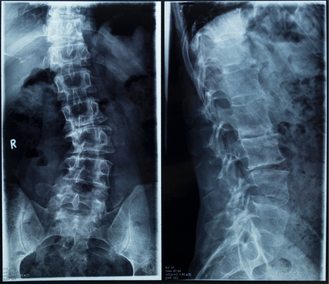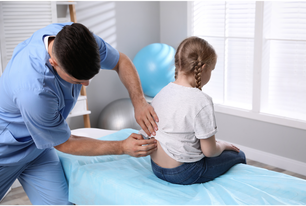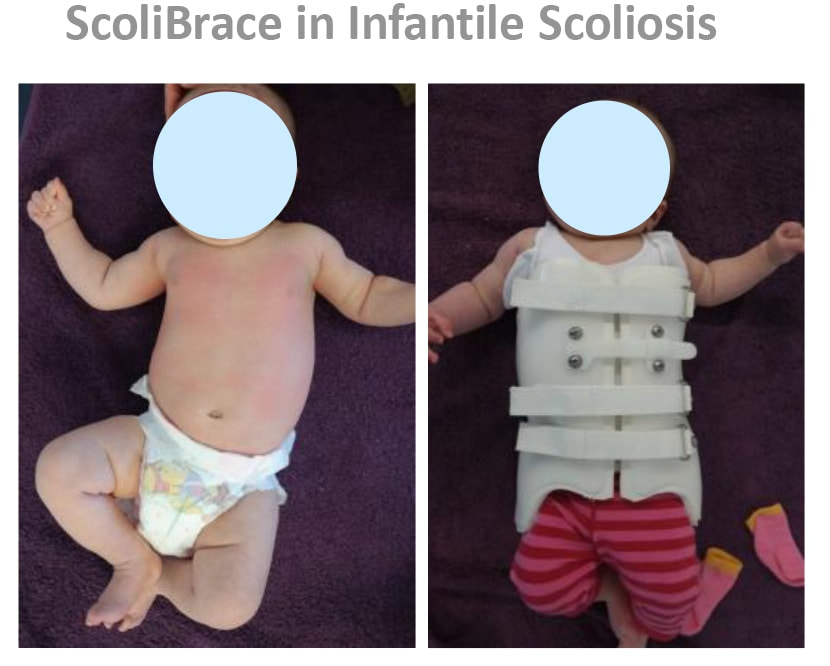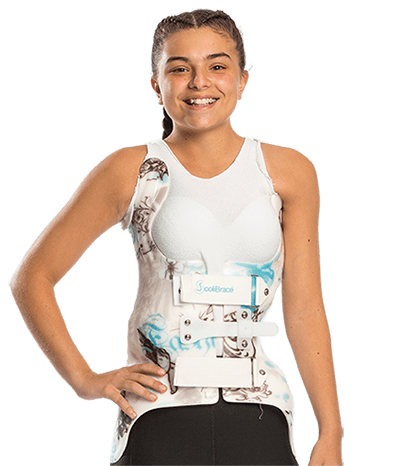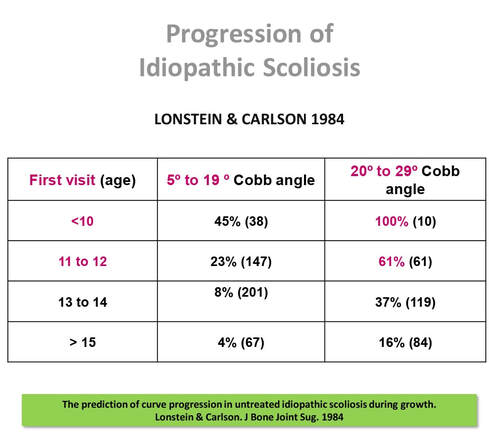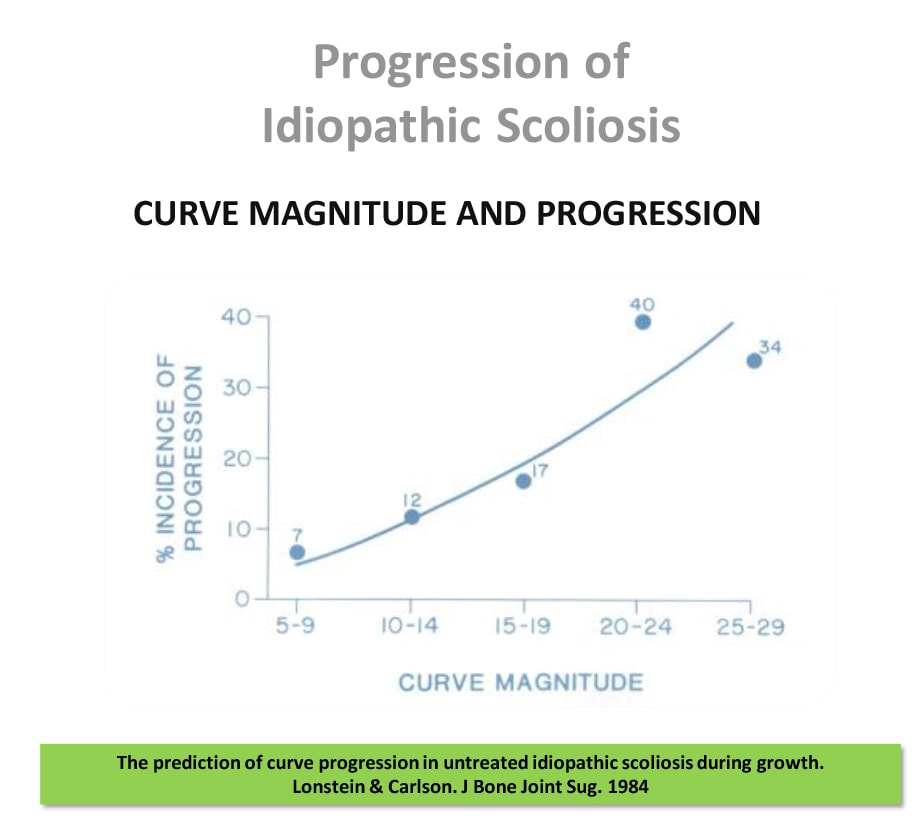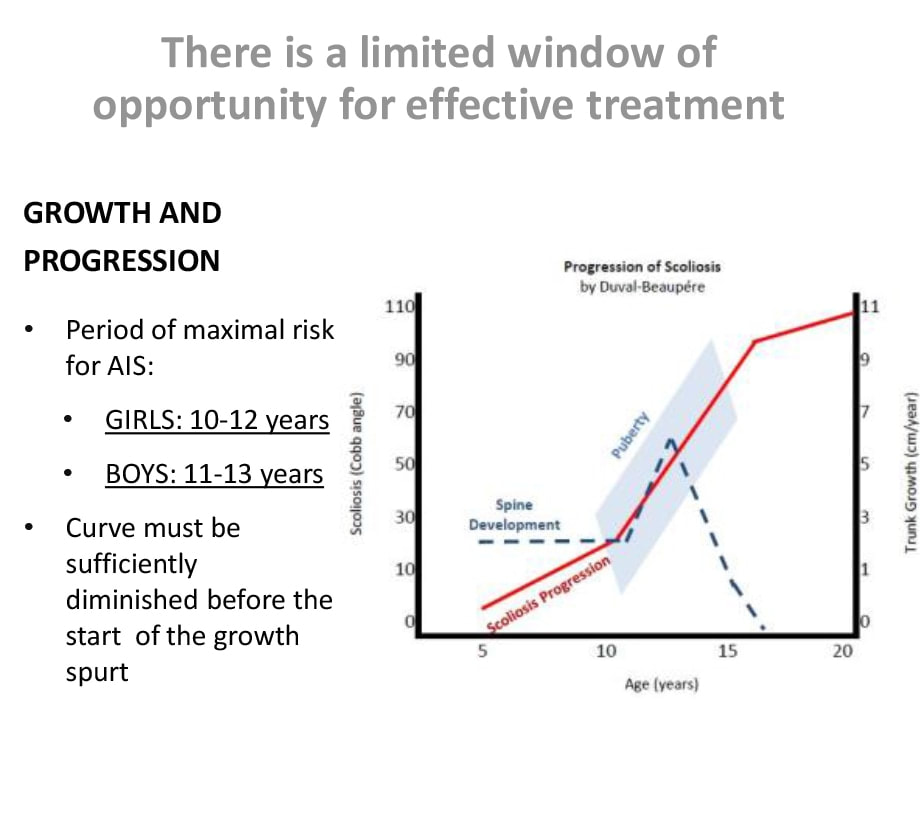What is scoliosis ?
|
The spine's curves work like a coiled spring to absorb shock, maintain balance, and to facilitate the full range of motion throughout the spinal column (see Anatomy of the Spine).
Typically, the normal spine has natural curves that form an S-shape when viewed from the side. The curves in the spine work like a coiled spring for the body—it helps to absorb shock, maintain balance, and allow for full range of motion of the backbone. The upper back bows outward while the lower back curves slightly inward. When viewed from the back, the normal spine appears as a straight line from the base of the neck to the tailbone. Scoliosis is a condition wherein the spine is curved sideways, as seen here on the left. |
The angle of the curve may be different for each person, but if the curve measures more than 10 degrees on the X-ray it is considered to be scoliosis.
Scoliosis is most often diagnosed in childhood, though the condition may persist into adulthood. This condition affects young girls eight times as often as it affects young boys.
Scoliosis is most often diagnosed in childhood, though the condition may persist into adulthood. This condition affects young girls eight times as often as it affects young boys.
Types of scoliosis
1. Idiopathic scoliosis
Idiopathic scoliosis is one of the two major classifications of scoliosis and is the most common out of the two. "Idiopathic" means the cause of the condition is unknown, although research is increasingly suggesting a possible familial link. While scoliosis is not a genetic condition and is therefore NOT hereditary, studies have shown that patients with this type of scoliosis tend to have a family history of scoliosis.
1a) Adolescent Idiopathic Scoliosis (AIS)
|
Adolescent Idiopathic Scoliosis (AIS) is the most common type of Idiopathic Scoliosis that affects children in their teenage years between the ages 10 and 18. It has been seen in 4 out of every 100 adolescents who are around puberty. Generally, AIS is caused by the curve of the spine progressing during this rapid period of growth. Most spine curves stop growing after reaching skeletal maturity during adolescence years, but some spine curves, especially those greater than 60 degrees, continue to grow into adulthood.
|
This type of Idiopathic Scoliosis is often seen in girls around the ages of 10 to 11 years, whereas in boys, between the ages of 13 to 14 years. AIS is more commonly seen in girls than in boys with a predominance in right-sided curves.
1b) Early-Onset scoliosis (EOS)
|
1c) Adult Degenerative Scoliosis (ADS)
In adults with no prior history of scoliosis in their teenage years, the wear and tear of the spinal joints and intervertebral discs may occur slowly over time as a person ages, resulting in spinal imbalance called Adult Degenerative Scoliosis (ADS). ADS is a type of scoliosis that is completely different from AIS—ADS is defined as a side-to-side curvature of the spine that is caused by the degeneration of the joints and is usually seen during puberty, when the skeleton has completed development. Adults that were diagnosed with AIS when they were younger may have to continue spinal maintenance care to avoid problems such as chronic low back pain.
Scoliosis caused by ADS faces a high risk of curve progression, while scoliosis in adults who were diagnosed with AIS as teenagers may either become stable or progress further into adulthood.
Scoliosis caused by ADS faces a high risk of curve progression, while scoliosis in adults who were diagnosed with AIS as teenagers may either become stable or progress further into adulthood.
1d) Degenerative De-Novo Scoliosis (DDS)
Similar to ADS, Degenerative De-Novo Scoliosis (DDS) is also a type of scoliosis that develops in adults after skeletal maturity as a result of spinal degeneration that comes with age. While both types of scoliosis may lead to pain, deformity, and varying degrees of disability, DDS differs from ADS in that it affects the lumbar vertebrae in the lower back and is usually caused by progressive intervertebral disc degeneration. Since DDS is a result of spinal degeneration and aging, DDS rarely presents itself before 40 years of age. DDS may be tricky to diagnose as it is difficult to differentiate it from ADS in elderly adults, even if said elderly adults have no prior history of scoliosis.
2. Non-Idiopathic Scoliosis
The other overarching classification type of scoliosis is non-idiopathic scoliosis. This type of scoliosis fulfills all criteria of the condition, the cause of which has been determined. These causes include syringomyelia, cerebral palsy, muscular dystrophy, hypermobility syndrome, neurofibromatosis, tumours, Ehlers-Danlos syndrome, Marfan's syndrome, osteopenia/osteoporosis, Scheuermann's disease, and various other connective tissue and neurological disorders.
FOR MORE INFORMATION, CONTACT USWill my scoliosis get worse? Children and AdolescentsPatients of this age group need to be closely monitored as the risk of curve progression is potentially high. There are several key factors that determine the risk of worsening, namely:
A full spinal X-ray is required to measure the Cobb angle that determines the severity of the scoliosis and the risk of progression. The angle of the curve may be different for each person, but if the curve measures more than 10 degrees on the X-ray it is considered to be scoliosis. A Cobb angle depicts the maximum distance a scoliotic curve may be from being straight. Scoliosis is diagnosed when the angle measures 10 degrees or more from being straight. A Cobb angle of 20 degrees or more requires the patient to wear a back brace and undergo intensive physical therapy. To determine the risk of scoliosis, we refer to a Lonstein & Carlson study published in 1984. This helps us monitor the potential progression of the curve in your spine. Generally speaking, the younger the child/the greater the Cobb angle, the greater the risk of curve progression. It is advised to get a screening for your child at Spinecare Chiropractic early as possible to reduce the chances of curve progression and increase the chances of successful spine therapy. Contact us to set up an appointment with a specialist. |
Adults
In some cases, the scoliosis in adults with a previous history of scoliosis in their younger years may become stable and bypass further curve progression.
However, there are cases in which the condition of the scoliosis may rapidly worsen due to the effects of gravity, increased spinal degeneration, and aging.
For example, Degenerative De-Novo Scoliosis (DDS) in adults may worsen by an average of 3 degrees per year.
Depending on the severity of the scoliosis, patients would need to undergo X-ray examinations regularly to determine the rate of progression.
However, there are cases in which the condition of the scoliosis may rapidly worsen due to the effects of gravity, increased spinal degeneration, and aging.
For example, Degenerative De-Novo Scoliosis (DDS) in adults may worsen by an average of 3 degrees per year.
Depending on the severity of the scoliosis, patients would need to undergo X-ray examinations regularly to determine the rate of progression.
Next section
How to detect and treat scoliosis: Click here
Click on the WhatsApp button to chat with us or Contact Us
New patient? Click here to learn more
Click on the WhatsApp button to chat with us or Contact Us
New patient? Click here to learn more

